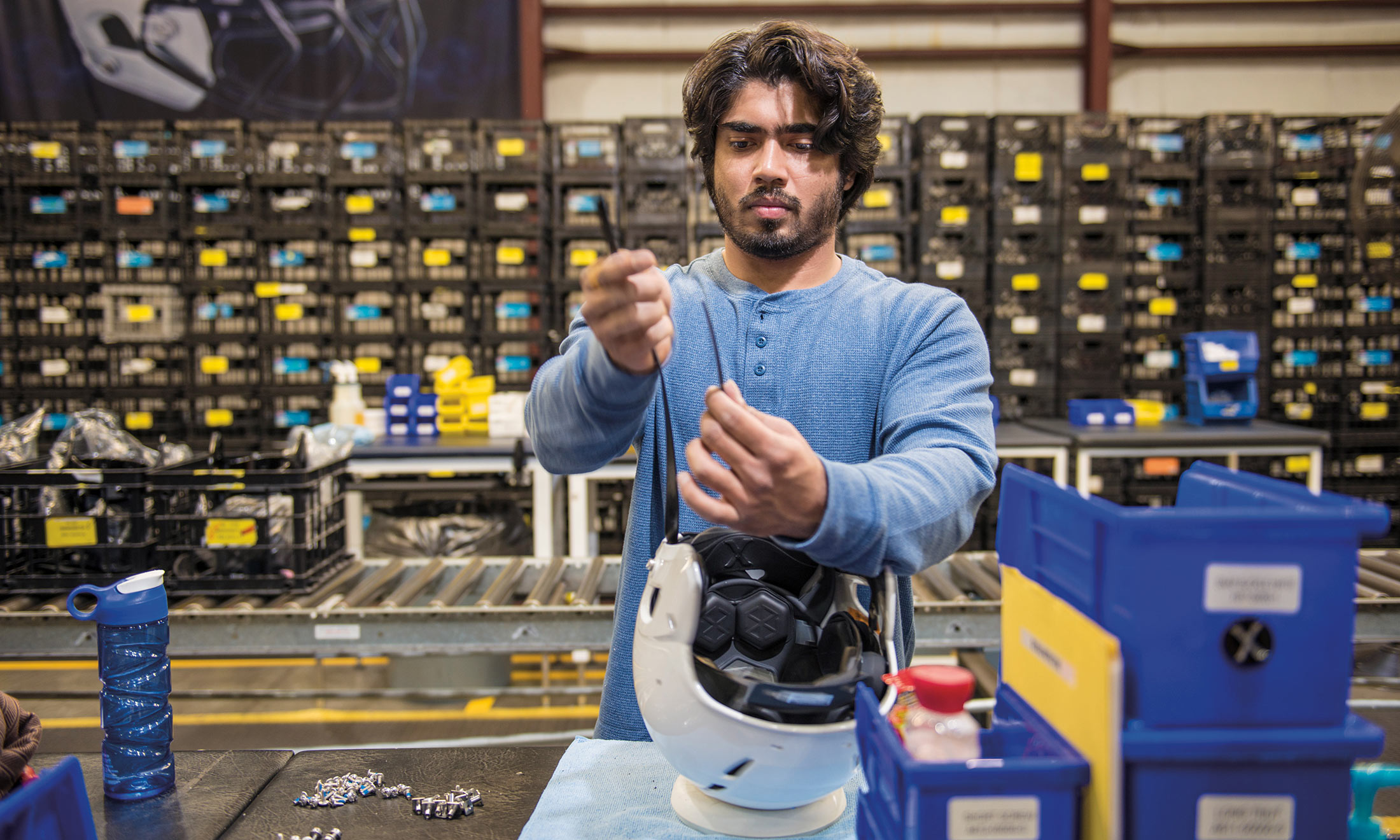- YouTube
- TikTok
'Headstrong'
Grad student Prateek Bansal (ISE) tackles football helmet performance at Xenith

Engineering grad student Prateek Bansal inspecting a Xenith helmet at the companies local factory. Photo by Josh Scott.
As an intern in quality testing at the Detroit-based football helmet producer, Xenith, grad student Prateek Bansal is learning that even the simplest systems can be hi-tech.
Xenith’s helmets have a special floating shock suspension system that allows the wearer’s head and the helmet’s shell to move independently from one another during a collision. An interior shock suspension system is secured to the person’s chin, adapting to the head for custom fit and retention. A floating shock suspension system moves independently of the shell, which mitigates rotational forces. Shock absorbers compress and absorb energy, releasing air upon impact. Finally, interior foams and padding provide an added layer of comfort and protection.
Bansal assists in the laboratory for testing and documenting the process. He develops a plant layout and works to improve other areas in the plant from the viewpoint of industrial engineering.
Bansal also works with warranty data to develop better reporting analysis for product engineering and product improvement and conducting time studies.
“The industrial and systems engineering (ISE) program prepared me for this current position with Xenith in a technical, logical and analytical sense,” says Bansal, who received his bachelor’s in mechanical engineering and is now pursuing his master’s in ISE. “The program is very efficient and smooth.”
As an ISE student, efficient and smooth are the ideal working conditions, says Bansal.
“Here the working environment is very good. People from different ethnicities and countries work together for the same goal,” says Bansal. “I feel connected to the sports world and feel we are making a difference by satisfying customers and providing a helmet that is safe and light.”
For more information about Xenith helmets, visit xenith.com. For more information about career-minded internships at Oakland University, visit oakland.edu/careerservices. This article originally appeared in the Oakland Engineer, a magazine of the School of Engineering and Computer Science.


 January 25, 2017
January 25, 2017 By Brandon Wright
By Brandon Wright

